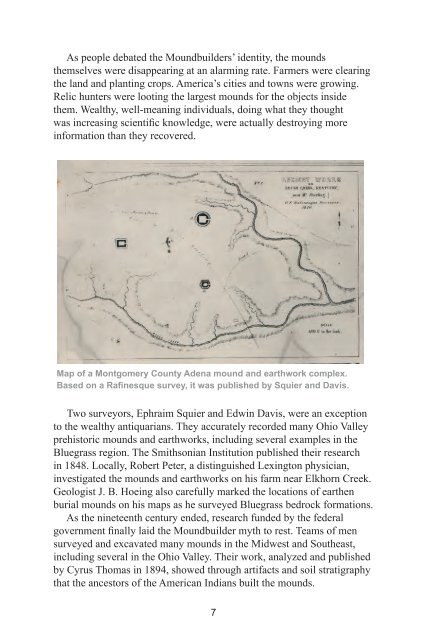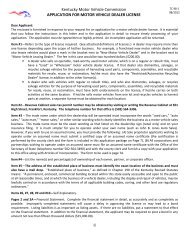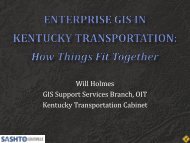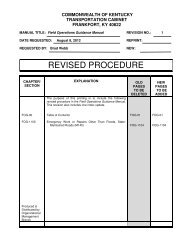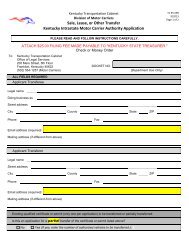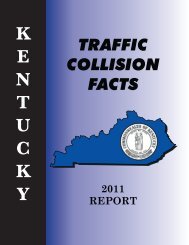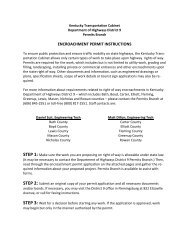woodland period moundbuilders of the bluegrass - Kentucky ...
woodland period moundbuilders of the bluegrass - Kentucky ...
woodland period moundbuilders of the bluegrass - Kentucky ...
- No tags were found...
You also want an ePaper? Increase the reach of your titles
YUMPU automatically turns print PDFs into web optimized ePapers that Google loves.
As people debated <strong>the</strong> Moundbuilders’ identity, <strong>the</strong> mounds<strong>the</strong>mselves were disappearing at an alarming rate. Farmers were clearing<strong>the</strong> land and planting crops. America’s cities and towns were growing.Relic hunters were looting <strong>the</strong> largest mounds for <strong>the</strong> objects inside<strong>the</strong>m. Wealthy, well-meaning individuals, doing what <strong>the</strong>y thoughtwas increasing scientific knowledge, were actually destroying moreinformation than <strong>the</strong>y recovered.Map <strong>of</strong> a Montgomery County Adena mound and earthwork complex.Based on a Rafinesque survey, it was published by Squier and Davis.Two surveyors, Ephraim Squier and Edwin Davis, were an exceptionto <strong>the</strong> wealthy antiquarians. They accurately recorded many Ohio Valleyprehistoric mounds and earthworks, including several examples in <strong>the</strong>Bluegrass region. The Smithsonian Institution published <strong>the</strong>ir researchin 1848. Locally, Robert Peter, a distinguished Lexington physician,investigated <strong>the</strong> mounds and earthworks on his farm near Elkhorn Creek.Geologist J. B. Hoeing also carefully marked <strong>the</strong> locations <strong>of</strong> ear<strong>the</strong>nburial mounds on his maps as he surveyed Bluegrass bedrock formations.As <strong>the</strong> nineteenth century ended, research funded by <strong>the</strong> federalgovernment finally laid <strong>the</strong> Moundbuilder myth to rest. Teams <strong>of</strong> mensurveyed and excavated many mounds in <strong>the</strong> Midwest and Sou<strong>the</strong>ast,including several in <strong>the</strong> Ohio Valley. Their work, analyzed and publishedby Cyrus Thomas in 1894, showed through artifacts and soil stratigraphythat <strong>the</strong> ancestors <strong>of</strong> <strong>the</strong> American Indians built <strong>the</strong> mounds.7


